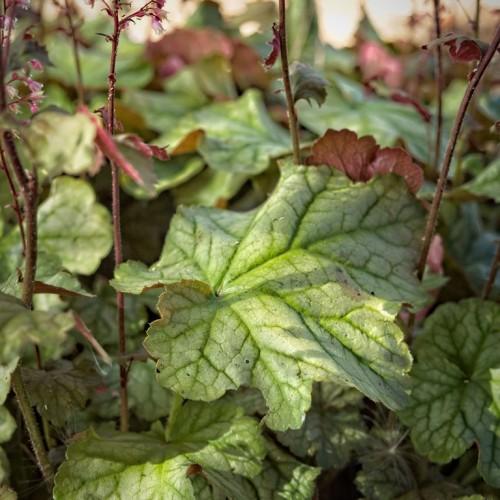
coral bells
Heuchera cvs.
Also Known As - alumrootCycle:
Herbaceous Perennial
Watering:
Minimum
Hardiness Zone:
7
Flowers:
Flowers In Summer
Sun:
Full sun, Part sun/part shade
Soil:
Humus rich, Well-drained
Fruits:
Fruits Ready In Fall
Leaf:
Yes
Growth Rate:
Moderate
Maintenance:
Low
Salt Tolerant:
Yes
watering
Watering for Crimson Flag plants should be done regularly but lightly. Water when the soil is beginning to dry out which should be every other day or every third day in hot weather. Water until it runs out of the drainage holes. When the weather is cooler, the frequency should be less. Over-watering can cause root rot, so it is important to not water too frequently. It is best to water your Crimson Flag in the morning so that the foliage has time to dry before nighttime.
sunlight
Crimson flag (Hesperantha coccinea) grows best in full sun, but will also tolerate partial shade. During the warmer months, this plant prefers full sun for most of the daylight hours. As temperatures cool down, the plant should maintain 4 to 6 hours of direct sunlight each day. In the winter months, Crimson Flag plants should remain in mostly bright, indirect light. When exposed to too much shade or sun, the blooming period will be reduced and the plant’s foliage will become leggy, resulting in fewer or smaller flowers.
pruning
Crimson flag (Hesperantha coccinea) should be pruned twice a year, in the early spring and late fall. In the early spring, snip off any dead stems and prune back the longest stems, leaving at least 2 or more developing buds at the base of the stem. In the late fall, after flowering has finished, remove any dead or weak stems and lightly prune the remaining stems to shape the plant. It's important to remember not to prune too vigorously as this may reduce flowering, and try to leave some of the old stems when pruning, as these will produce flowers the following season.
